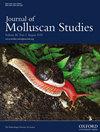描述法属波利尼西亚锥蜗牛的进食节奏
IF 1.2
4区 生物学
Q2 MARINE & FRESHWATER BIOLOGY
引用次数: 0
摘要
腹足纲(Conidae)是海洋腹足类软体动物的一个科,包括肉食性和毒性物种。它们产生的毒液种类繁多,最近引起了药理学界的极大兴趣。为了应对这种日益增长的兴趣,需要更好地了解该物种的生态学和生物学。只有少数研究详细考察了这些物种的摄食行为和营养特化。在这项研究中,我们通过饥饿和饱腹实验研究了法属波利尼西亚的八种圆锥藻的摄食情况,这些圆锥藻具有不同的摄食模式(食鱼、食软体动物或食虫)。对空腹期间锥体动物行为的监测表明,饥饿感增强与锥体动物夜间活动之间存在相关性,这主要体现在食鱼类锥体动物身上,而软体动物则没有这种相关性。在关于饱腹感的研究中,我们为自由采食猎物的锥体动物确定了平均采食频率。最后,这项研究提供了一些指标,有助于在涉及锥体动物培育的进一步研究中确定平衡摄食频率。本文章由计算机程序翻译,如有差异,请以英文原文为准。
Description of the feeding rhythm of cone snails in French Polynesia
The Conidae is a family of marine gastropod molluscs that includes carnivorous and venomous species. The venom they produce is remarkably diverse and has recently drawn much interest from a pharmacological perspective. To respond to this growing interest, a better understanding of the ecology and biology of the species is required. Only a few studies have examined the feeding behaviour and the trophic specialization of these species in detail. In this study, we investigated diet through hunger and satiety experiments of eight species of cones that occur in French Polynesia and that present different feeding modes (piscivorous, molluscivorous or vermivorous). Monitoring behaviour of cones during fasting periods demonstrated a correlation between increased hunger and nocturnal cone activity, mainly for piscivorous species, while the molluscivores did not show this correlation. In the study on satiety, we defined an average frequency of feeding for cone species that were fed prey ad libitum. Finally, this study provided indications that will help to define an equilibrium feeding frequency in further studies involving the cultivation of cones.
求助全文
通过发布文献求助,成功后即可免费获取论文全文。
去求助
来源期刊

Journal of Molluscan Studies
生物-动物学
CiteScore
3.00
自引率
8.30%
发文量
36
审稿时长
3 months
期刊介绍:
The Journal of Molluscan Studies accepts papers on all aspects of the study of molluscs. These include systematics, molecular genetics, palaeontology, ecology, evolution, and physiology. Where the topic is in a specialized field (e.g. parasitology, neurobiology, biochemistry, molecular biology), submissions will still be accepted as long as the mollusc is the principal focus of the study, and not incidental or simply a convenient experimental animal. Papers with a focus on fisheries biology, aquaculture, and control of molluscan pests will be accepted only if they include significant advances in molluscan biology. While systematic papers are encouraged, descriptions of single new taxa will only be considered if they include some ‘added value’, for example in the form of new information on anatomy or distribution, or if they are presented in the context of a systematic revision or phylogenetic analysis of the group.
 求助内容:
求助内容: 应助结果提醒方式:
应助结果提醒方式:


